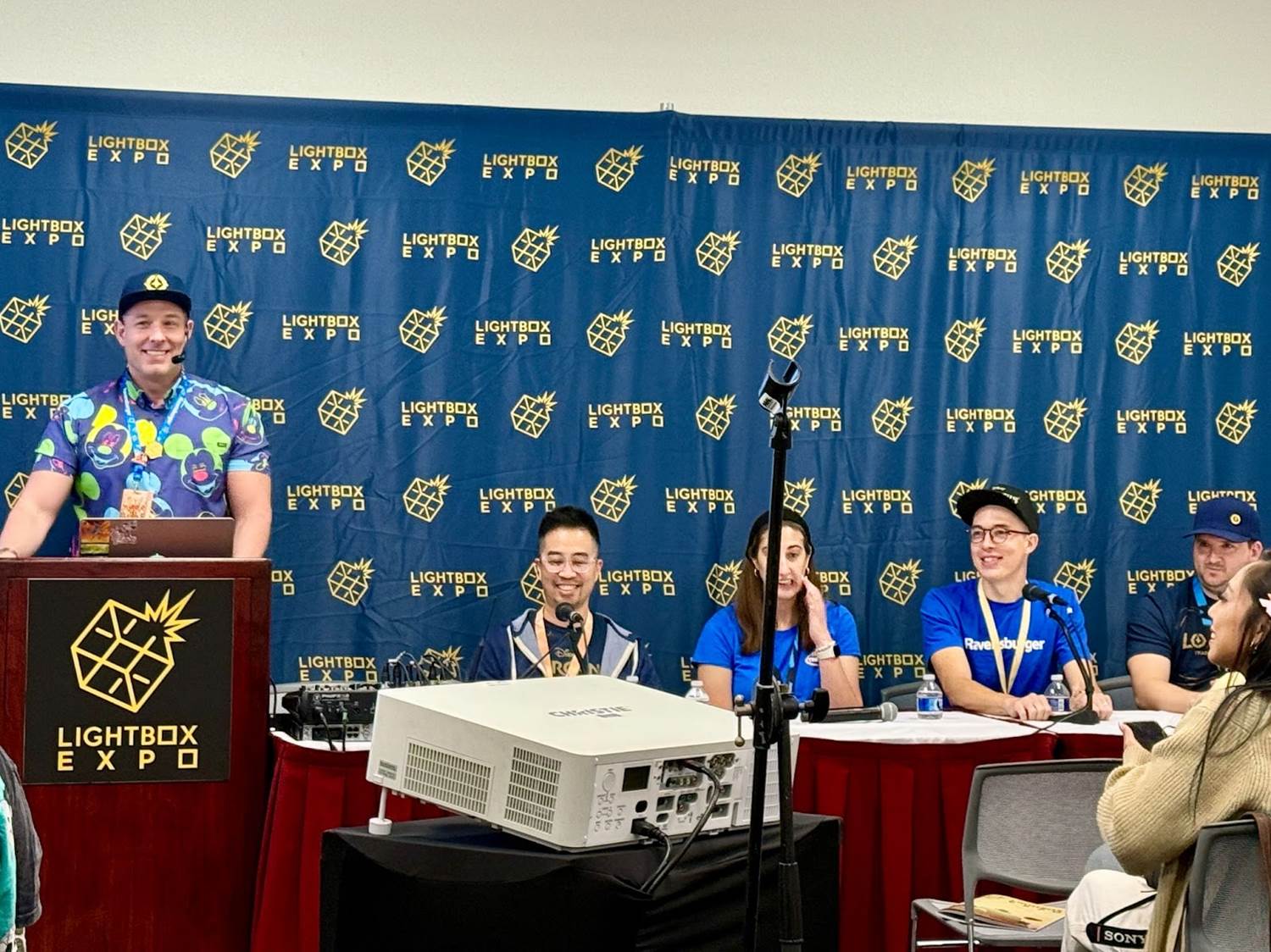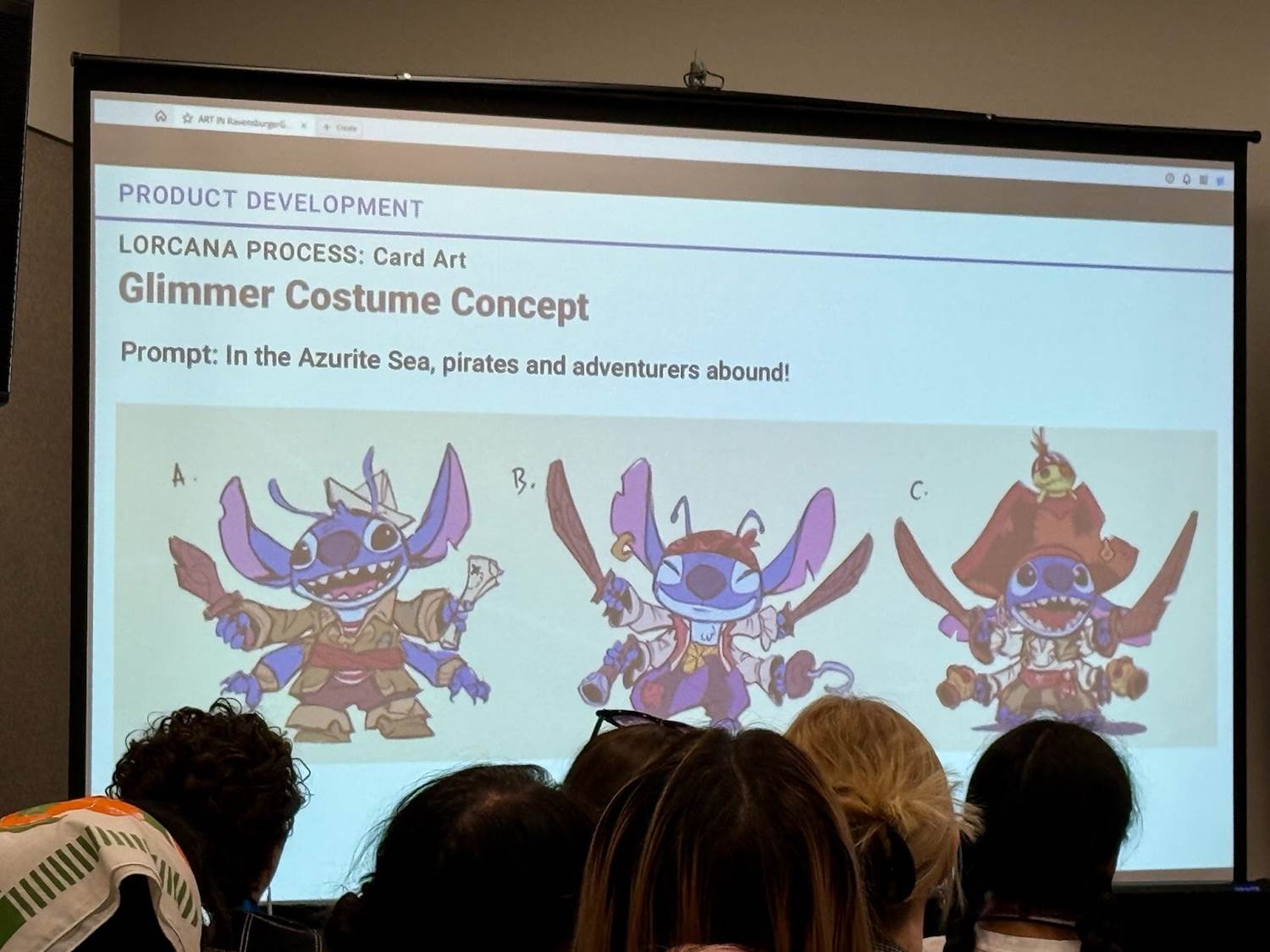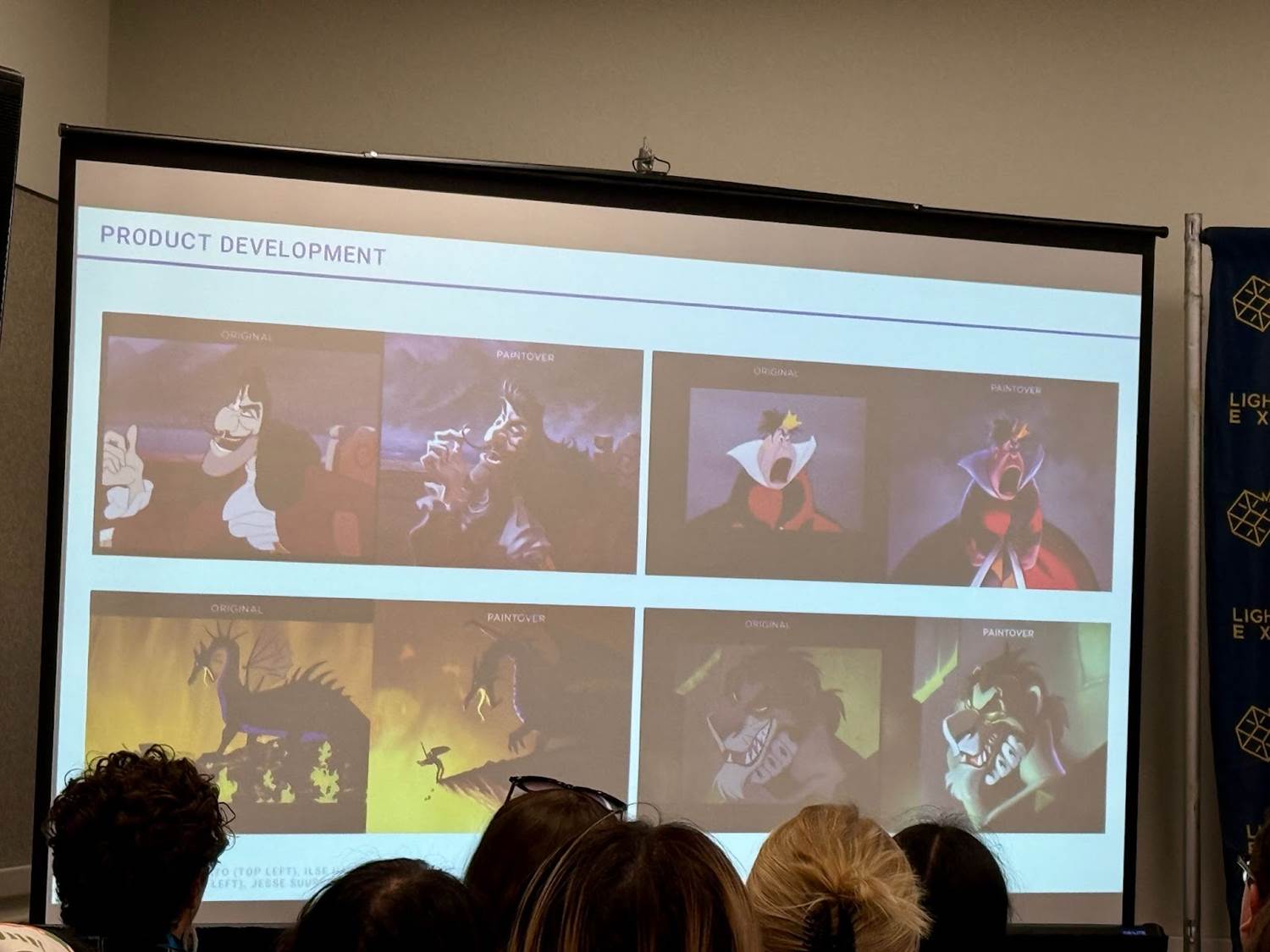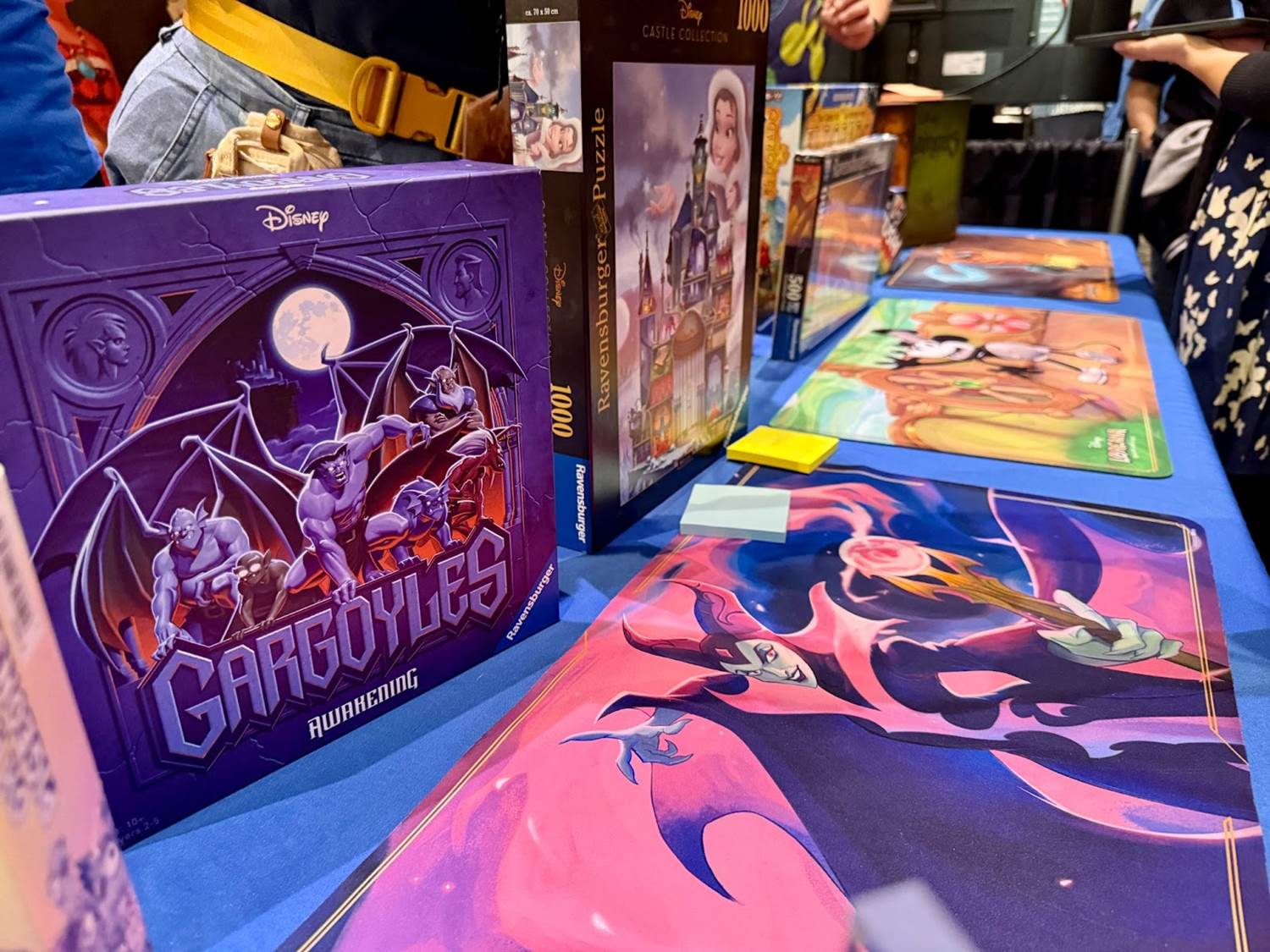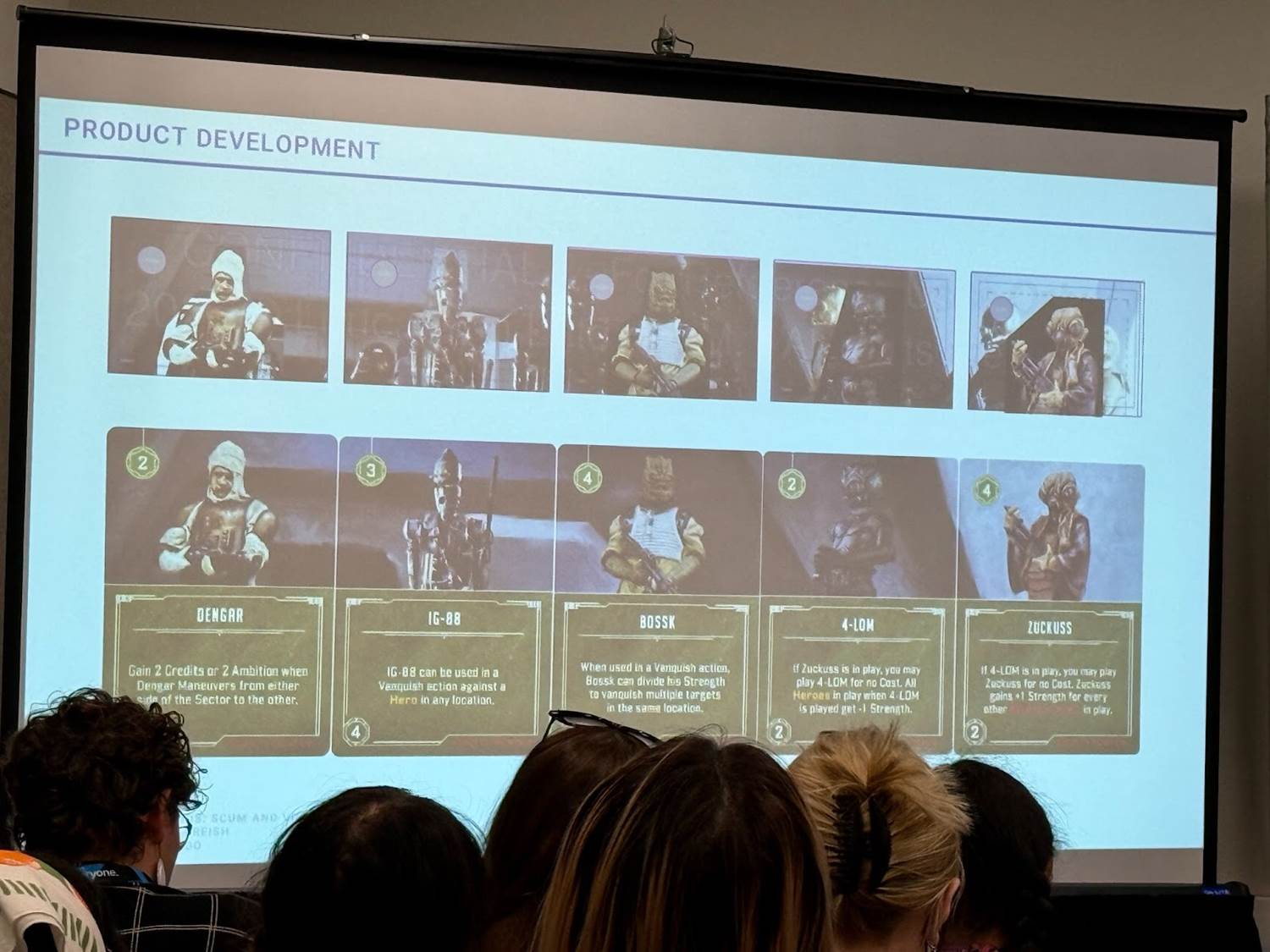Ravensburger Reveals Design Process for Disney Licensed Games at LightBox Expo
At the recent LightBox Expo, Ravensburger’s team provided an in-depth look into their design process for some of their most popular Disney-licensed games, including Disney Lorcana, Villainous (Disney, Marvel, and Star Wars editions), and Gargoyles: Awakening. The panel, led by Global Creative Director Shane Hartley, explored how Ravensburger develops the artwork, engages with Disney’s intellectual properties, and collaborates with a talented pool of artists to bring immersive tabletop games to life.
sShane Hartley kicked off the panel by emphasizing that Ravensburger’s games are artist-driven, pointing out that, without art, “our games would be just Excel sheets." This philosophy has led the team to highly value their artists, ensuring that the visuals not only make each game engaging but also create an escape for players. This sentiment was echoed throughout the presentation as each team member shared their commitment to maintaining high artistic standards across their games.
Disney Lorcana: Worldbuilding and Visual Language
Matthew Eng, Lead Art Director for Disney Lorcana, outlined the unique approach to designing the trading card game. Unlike traditional games, Lorcana is not just a card game but an entire world with a robust narrative and deep lore. The world of Lorcana is rooted in six “inks," each representing a unique aspect of personality and gameplay that shapes the character designs and settings:
- Amber (team-focused and purposeful)
- Amethyst (magical and mystical)
- Emerald (flexible and mischievous)
- Ruby (daring and brave)
- Sapphire (intellectual and logical)
- Steel (strong and resilient)
Eng explained that these inks drive the design of both the characters and the landscapes, blending a consistent visual language across cards through specific shapes, colors, and themes that represent each ink. To illustrate this, he showcased cards like Stitch the Pirate from the new Azurite Seas wave, explaining how colors and compositions were chosen to bring Stitch’s adventurous, pirate persona to life while adhering to the Ruby ink’s bold and angular shape language.
Villainous: Iconic Moments and Consistency
Villainous has been one of Ravensburger’s flagship games, beloved by fans for allowing them to embody classic villains from Disney, Marvel, and Star Wars franchises. Jake Breish, North American Art Director, described how Villainous games rely on “paintover style," where they take memorable frames from each franchise and adapt them into the game’s distinct visual aesthetic. This approach allows the team to maintain a high level of character recognition while infusing each villain’s artwork with a unique “villainous house style" — 80% matching the Villainous visual language, with 20% incorporating the individual artist’s flair.
The team shared behind-the-scenes details on how they craft Villainous portraits to capture iconic expressions, sometimes even creating composite images to depict the perfect pose. For example, in the case of Star Wars Villainous, the team balances the different looks of characters from live-action and animated series, leaning into the artist’s unique style to bridge variations and create cohesive, recognizable depictions of fan-favorite characters like Count Dooku and Asajj Ventress.
Gargoyles: Building a Beloved World in 3D
Ravensburger’s Gargoyles: Awakening game represents one of their most intricate projects, especially given the challenge of creating a three-dimensional game board that recreates the New York City skyline, complete with iconic landmarks. For this project, Jake and his team incorporated 3D folded buildings, ensuring that the board captured the show’s atmosphere and visual style. The challenge was to integrate UI elements and gameplay functionality, allowing the buildings to seamlessly connect while still evoking the show’s iconic scenes.
Hartley shared that creating the Gargoyles board required extensive research, even down to matching building details and placement. This dedication extended to scouting artists skilled in 3D modeling, who could transform the two-dimensional assets provided by Disney into a functional game component that looked and felt like scenes from the animated series.
Design Challenges and Cross-Property Consistency
One of the core themes discussed was Ravensburger’s commitment to honoring the essence of each intellectual property. Hartley, Eng, and the other panelists discussed the importance of integrating Disney’s characters into cohesive worlds while maintaining their iconic traits. For Lorcana, they created a unified style called “magepunk," blending Art Deco and Art Nouveau influences to make a world where magic has scientific foundations - essentially “Leonardo da Vinci meets Merlin."
The team also highlighted how Ravensburger’s dedication to quality extends beyond just the visuals. From manufacturing considerations, such as adjusting color contrast for clarity during printing, to playtesting and usability checks, Ravensburger’s artists and designers work closely with licensors like Disney, Lucasfilm, and Marvel. This collaboration ensures that each game respects the lore of each property while providing a unique gameplay experience.
Ravensburger’s commitment to artist-led design is evident across all its Disney-licensed games. Each artist’s input is valued in shaping the world, characters, and gameplay experience. Whether it’s Lorcana’s richly detailed character designs, Villainous’s iconic villain depictions, or Gargoyles Awakening’s immersive 3D game board, Ravensburger’s games demonstrate how great artwork can elevate a tabletop game into an engaging storytelling experience.
(Please note this article contains affiliate links. Your purchase will support LaughingPlace by providing us a small commission, but will not affect your pricing or user experience. Thank you.)



